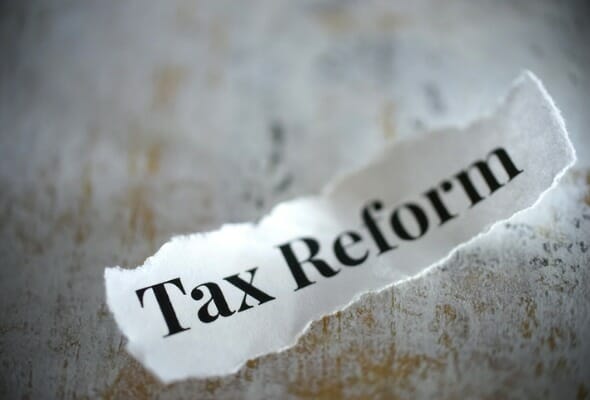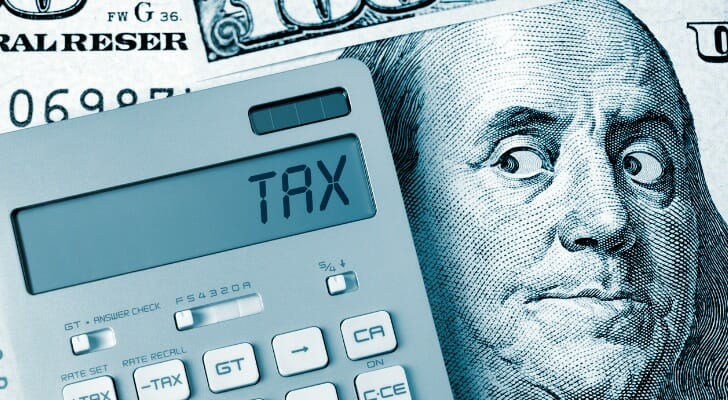

President Donald Trump signed a law that dramatically overhauled the U.S. tax code in December 2017. The law created new income tax brackets that changed what many Americans pay in taxes. Most changes went into effect on Jan. 1, 2018, and did not affect your tax return until the 2018 tax year, which you filed in 2019. Let’s take a look at the 2024 tax brackets, and compare them to the 2023 and 2017 brackets to see how the Trump tax plan could have affected your tax return. And depending on these changes, you might want to work with a financial advisor to help formulate a tax strategy for your finances.
A financial advisor may be able to help. Match with an advisor serving your area today.
Many workers noticed changes to their paychecks starting in 2018 when the new tax rates went into effect. However, these new brackets, rates and general tax laws instituted by the Trump Administration will expire in 2025.
The chart below shows the tax brackets from the Trump tax plan. If you know your yearly income, you can figure out your tax bracket and see what your rate is for your 2023 taxes (due in April 2024). Remember, federal income tax is not assessed at a flat rate. If you’re in the 22% tax bracket, you don’t pay a 22% tax on all of your earnings.
Instead, federal income taxes are marginal, meaning your tax rate only applies to the portion of income that falls directly within that bracket. All other income is taxed at lower rates.
| Tax Rate | Single | Married Filing Jointly | Married Filing Separately | Head of Household |
| 10% | $0 – $11,600 | $0 – $23,200 | $0 – $11,600 | $0 – $16,550 |
| 12% | $11,600 – $47,150 | $23,200 – $94,300 | $11,600 – $47,150 | $16,550 – $63,100 |
| 22% | $47,150 – $100,525 | $94,300 – $201,050 | $47,150 – $100,525 | $63,100 – $100,500 |
| 24% | $100,525 – $191,950 | $190,751 – $383,900 | $100,525 – $191,950 | $100,500 – $191,950 |
| 32% | $191,950 – $243,725 | $383,900 – $487,450 | $191,950 – $243,725 | $191,950 – $243,700 |
| 35% | $243,725 – $609,350 | $487,450 – $731,200 | $243,725 – $365,600 | $243,700 – $609,350 |
| 37% | $609,350+ | $731,200+ | $365,600+ | $609,350+ |
Here are the income tax brackets for tax year 2023:
| Tax Rate | Single | Married Filing Jointly | Married Filing Separately | Head of Household |
| 10% | $0 – $11,000 | $0 – $22,000 | $0 – $11,000 | $0 – $15,700 |
| 12% | $11,000 – $44,725 | $22,000 – $89,450 | $11,000 – $44,725 | $15,700 – $59,850 |
| 22% | $44,725 – $95,375 | $89,450 – $190,750 | $44,725 – $95,375 | $59,850 – $95,350 |
| 24% | $95,375 – $182,100 | $190,750 – $364,200 | $95,375 – $182,100 | $95,350 – $182,100 |
| 32% | $182,100 – $231,250 | $364,200 – $462,500 | $182,100 – $231,250 | $182,100 – $231,250 |
| 35% | $231,250 – $578,125 | $462,500 – $693,750 | $231,250 – $578,125 | $231,250 – $578,100 |
| 37% | $578,125+ | $$693,750+ | $578,125+ | $578,100+ |
And for another comparison, the chart below shows the tax brackets for 2017. If you know your yearly income, you can see how the new plan changed your tax rate from before. Here’s a breakdown:
| Tax Rate | Single | Married Filing Jointly | Married Filing Separately | Head of Household |
| 10% | $0 – $9,325 | $0 – 18,650 | $0 – $9,325 | $0 – $13,350 |
| 15% | $9,325 – $37,950 | $18,650 – $75,900 | $9,320 – $37,950 | $13,350 – $50,800 |
| 25% | $37,950 – $91,900 | $75,900 – $153,100 | $37,950 – $76,550 | $50,800 – $131,200 |
| 28% | $91,900 – $191,650 | $153,100 – $233,350 | $76,550 – $116,675 | $131,300 – $212,500 |
| 33% | $191,650 – $416,700 | $233,350 – $416,700 | $116,675 – $208,350 | $212,500 – $416,700 |
| 35% | $416,701 – $418,400 | $416,700 – $470,700 | $208,350 – $235,350 | $416,700 – $444,550 |
| 39.6% | $418,400+ | $470,700+ | $235,350+ | $444,550+ |

The biggest changes under the new Trump tax plan came from those in the middle of the chart. A married couple whose total income minus deductions is $250,000 would have had a 33% tax rate in 2017. In both 2023 and 2024, their highest tax rate would be just 24%. That would have led to a fairly significant difference in take-home pay.
Those who earn less may also see a bit of a break. A single person making $39,000 in taxable income in 2017 would have had a top tax rate of 25%. In 2023 and 2024, their marginal tax rate would be just 12%.
You also get a tax break if you’re among the country’s highest earners. The highest tax bracket used to carry a 39.6% rate and apply to single people earning more than $418,400 and married couples filing jointly who earned more than $470,700 in taxable income. The highest rate in 2024, which is just 37%, applies to incomes over $609,350 for single people and $731,200 for joint filers.
Other notable Trump tax overhaul changes include:
Individual tax provisions are going to expire after 2025. So when you file in 2026, rates will go back to those before Trump’s 2018 changes.
Remember that the tax rates are marginal. The tax rate for your total income applies only to the income earned in that bracket. For instance, if you’re single and your taxable income is $300,000 in 2024, only the income you earn past $243,7251 will be taxed at the rate of 35% shown on the corresponding federal income tax chart above. The lower rates apply to income in the corresponding brackets.
This is important to consider when thinking about deductions and figuring out your taxable income. Just because your total income reaches a new tax bracket, that doesn’t mean all your money is taxed at that rate. It only applies to anything above the threshold for the new bracket.
Keep in mind that tax brackets change for inflation each year. As a result, this could put you in a different tax bracket from one year to the next. That means that you might also have to pay a different tax rate for part of your income. If you’re wondering how the tax changes affect your specific tax situation, use SmartAsset’s income tax calculator. It will help you see what you can expect to pay under the new plan.

According to the IRS, tax refunds averaged $3,054 in 2023. This is a 3.8% decrease from the previous year when the average return was worth $3,176. While Americans are getting tax cuts, depending on individual taxpayer circumstances, the Joint Committee on Taxation and the Congressional Budget Office said in 2017 that Trump’s tax plan could add over $1 trillion to the national debt by 2027.
Trump’s tax plan was one of the largest tax code overhauls in decades – lowering individual tax rates, raising standard deductions and lowering the threshold for medical expense deductions, among other changes. It didn’t affect taxpayers until the 2018 tax year, and many of the benefits will expire by 2025.
Photo credit: ©iStock.com/Kameleon007, ©iStock.com/hamzaturkkol, ©iStock.com/wutwhanfoto
Ben Geier, CEPF®Ben Geier is an experienced financial writer currently serving as a retirement and investing expert at SmartAsset. His work has appeared on Fortune, Mic.com and CNNMoney. Ben is a graduate of Northwestern University and a part-time student at the City University of New York Graduate Center. He is a Certified Educator in Personal Finance® (CEPF®) and a member of the Society for Advancing Business Editing and Writing. When he isn’t helping people understand their finances, Ben likes watching hockey, listening to music and experimenting in the kitchen. Originally from Alexandria, VA, he now lives in Brooklyn with his wife.
Read More About Taxes



More from SmartAsset
SmartAsset Advisors, LLC ("SmartAsset"), a wholly owned subsidiary of Financial Insight Technology, is registered with the U.S. Securities and Exchange Commission as an investment adviser. SmartAsset's services are limited to referring users to third party advisers registered or chartered as fiduciaries ("Adviser(s)") with a regulatory body in the United States that have elected to participate in our matching platform based on information gathered from users through our online questionnaire. SmartAsset receives compensation from Advisers for our services. SmartAsset does not review the ongoing performance of any Adviser, participate in the management of any user's account by an Adviser or provide advice regarding specific investments.
We do not manage client funds or hold custody of assets, we help users connect with relevant financial advisors.
This is not an offer to buy or sell any security or interest. All investing involves risk, including loss of principal. Working with an adviser may come with potential downsides such as payment of fees (which will reduce returns). There are no guarantees that working with an adviser will yield positive returns. The existence of a fiduciary duty does not prevent the rise of potential conflicts of interest.